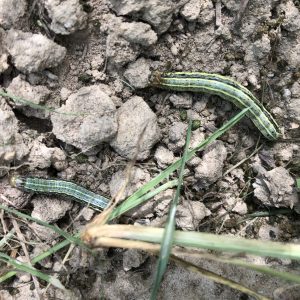
Fall armyworm infestations continue to be rampant across Alabama. According to the most recent Alabama Extension Pest Monitoring Report, there were 585 moth numbers collected in 19 different trap locations. That is way more than the 114 recorded this time last year.
Fall armyworms are dark with a Y-shaped mark on their head and four spots at the tail end. They are a native species that overwinter in the Southeast.
There are various management practices in vegetable production systems that growers can implement. Producers can utilize systems-based or cultural control practices. These include monitoring armyworms using pheromone traps for catching moths and scouting for caterpillars.
It is also important to plant and harvest your crop in a timely fashion. Armyworms worsen on later crops because of their 30-day life cycle that can lead to four or five generations. Producers also need to conserve natural enemies. Don’t overspray with conventional or organic insecticides. Remove debris from the previous crop after harvest.
Growers can also implement pest exclusion systems. For a temporary exclusion system, use a light insect barrier immediately after transplanting or after seed germination to block moths. Remove the fabric after the threat is over and pollinators are needed. For a high tunnel pest exclusion system, use a 50% shade cloth with wide openings around high tunnels to block moths and reduce caterpillar numbers.
There are also biorational insecticides for organic farmers and synthetic insecticides for conventional farmers.









